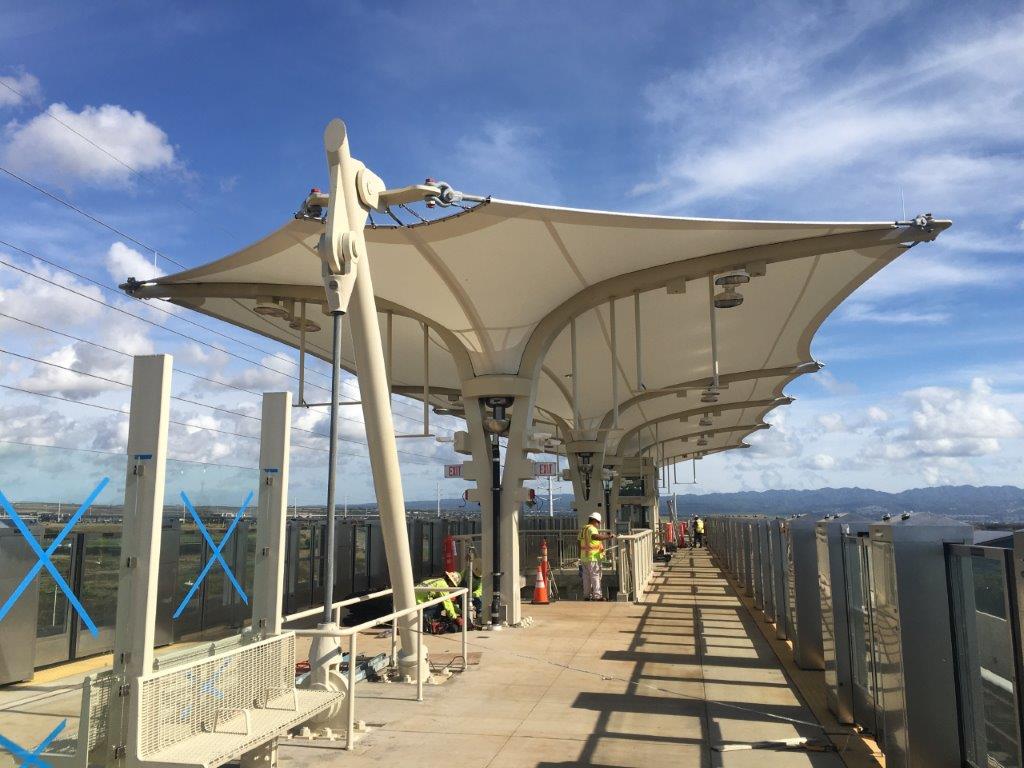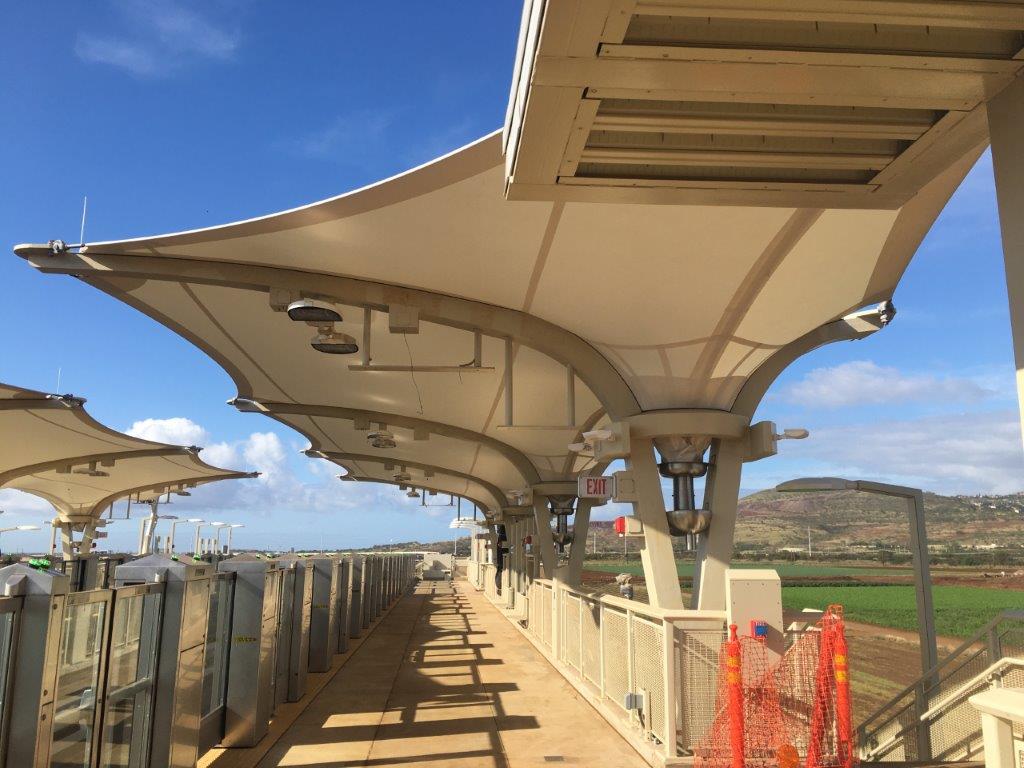

Taiyo Kogyo Column
Honolulu Rail Transit Station Building Adopts Membrane Structure
2020.03.04

~Hawaii's first high-speed rail to open in 2020; membrane installation completed on three station projects
Taiyo Kogyo has recently completed three Honolulu Rail Transit station building projects awarded through its U.S. subsidiary Birdair Inc.
The Honolulu Rail Transit, in which Taiyo Kogyo’s local subsidiary (Birdair Inc.) participated, is the first high-speed rail line in the state of Hawaii, and is planned to connect Kapolei, a suburb of Honolulu, to Ala Moana Center via the Honolulu International Airport with 21 stations over its 32-km length. The line is expected to open in late 2020 and be fully operational by 2025.
Birdair Inc. was awarded the contract to design, fabricate, and construct the membrane roofs on the platforms and sheds around the stations in six station buildings. Each of the 21 planned stations is designed differently, and the design reflects the character and history of the area through workshops with local residents. The landscape around the stations adopts local plantings and nature. East Kapolei Station, University of Hawaii West Oahu Station, and Ho’opili Station, which are the first of the 21 stations to be roofed with PTFE-coated fiberglass membrane, have now been completed. 3.5 months from October 2019 to the end of January 2020, a total A total of 2,043 square meters of membrane was completed in 3.5 months from October 2019 to the end of January 2020. The remaining three stations will be completed in August, with membrane installation beginning in April of this year.
The opening of the new line is expected to alleviate traffic congestion in urban areas and promote environmentally friendly transportation.



About Honolulu Rail Transit
Client:Honolulu Authority for Rapid Transportation (HART) Structural Design: AECOM / Geiger Engineers
Construction:
Nan Inc.
Construction Businessへの
Contact us
Related Articles
- TOP>
- Taiyo Kogyo Column>
- Honolulu Rail Transit Station Building Adopts Membrane Structure








